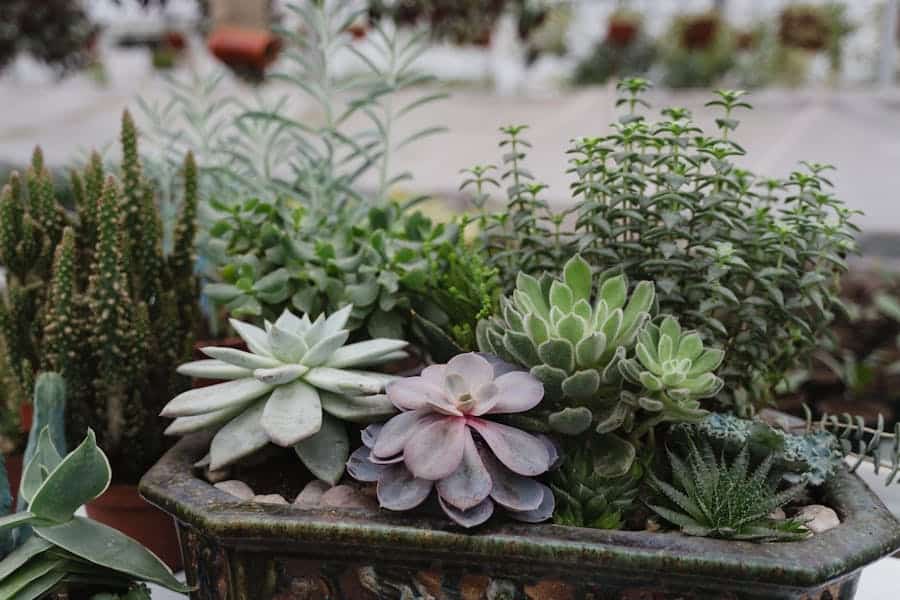A brief guide presents a sizeable collection of plant names meant to serve hobbyists, gardeners, and plant enthusiasts seeking labels that fit their green companions. This guide makes it easier to browse a variety of names suited to different plant personalities.
Basic List of Good Names for Plants
Below is a straightforward compilation of names without additional commentary. This section gathers a range of options, covering simple, classic, and nature-inspired selections.
• Daisy
• Lily
• Ivy
• Fern
• Maple
• Poppy
• Rose
• Tulip
• Orchid
• Azalea
• Magnolia
• Olive
• Sage
• Basil
• Rosemary
• Juniper
• Clover
• Petal
• Berry
• Gardenia
• Marigold
• Dahlia
• Pansy
• Lavender
• Primrose
• Honeysuckle
• Snapdragon
• Iris
• Hyacinth
• Sunflower
• Buttercup
• Zinnia
• Camellia
• Daffodil
• Freesia
• Petunia
• Amaryllis
• Chrysanthemum
• Periwinkle
• Sweet Pea
• Anemone
• Bluebell
• Carnation
• Cosmos
• Delphinium
• Echinacea
• Flax
• Geranium
• Heliotrope
• Jonquil
• Lupine
• Mimosa
• Oleander
• Verbena
• Wisteria
• Yarrow
• Acacia
• Almond
• Ash
• Beech
• Birch
• Cedar
• Chestnut
• Cypress
• Elm
• Fir
• Hazel
• Hickory
• Juniperus
• Laurel
• Locust
• Magnolia (variation)
• Maple (variation)
• Olive (variation)
• Palm
• Pine
• Redwood
• Sequoia
• Spruce
• Willow
• Ebony
• Alder
• Banyan
• Bamboo
• Banyan Lily
• Bellflower
• Bluebonnet
• Buttercup (variation)
• Calendula
• Carnation (variation)
• Cherry
• Celandine
• Citrine
• Dogwood
• Elderberry
• Fern (variation)
• Fuchsia
• Gerbera
• Heather
• Hibiscus
• Hyacinth (variation)
• Ironwood
• Jacaranda
• Jasmine
• Larkspur
• Mimosa (variation)
• Oleander (variation)
• Orchid (variation)
• Peony
• Poinsettia
• Quince
• Rhododendron
• Salvia
• Sassafras
• Sorrel
• Statice
• Tansy
• Verbena (variation)
• Viola
• Waterlily
• Wattle
This basic list reveals many options, ranging from everyday to slightly uncommon titles, helping interested individuals select a term that resonates with their plant’s characteristic.
Table of Plant Names and Descriptions
The table below pairs plant names with a brief description or suggestion for their use. The descriptions highlight aspects such as origin, character, or associations. The table is meant to serve those looking for a quick reference.
| Name | Description |
|---|---|
| Ivy | A hardy climber known for its persistence. |
| Fern | Represents delicate and green foliage. |
| Maple | Evokes the image of sturdy and striking form. |
| Poppy | Symbolizes beauty and gentle charm. |
| Rose | Commonly associated with love and beauty. |
| Tulip | Hints at seasonal elegance and color. |
| Lavender | Carries a soft scent and soothing aura. |
| Basil | A culinary herb that brings freshness. |
| Sage | Connotes wisdom and a calming presence. |
| Juniper | Often used to name resilient, aromatic plants. |
| Clover | Suggests luck and a touch of nature. |
| Petal | Simple and sweet, perfect for a delicate bloom. |
| Berry | Implies a fruitful and lively character. |
| Gardenia | Evokes a refined aroma and pristine look. |
| Marigold | Radiates with sunny hues and cheerfulness. |
| Dahlia | A name with layers, much like the flower itself. |
| Pansy | Reflects a soft, gentle nature. |
| Honeysuckle | Associated with a sweet embrace of nature. |
| Snapdragon | Speaks to strength and uniqueness. |
| Iris | With a look of regal elegance and color. |
| Hyacinth | Brings to mind vibrant bursts of fragrance. |
| Sunflower | Depicts optimism with a bright, bold presence. |
| Buttercup | Delicate yet lively, ideal for small blooms. |
| Zinnia | Known for its bold colors and endurance. |
| Camellia | A graceful name often linked with tradition. |
| Daffodil | Reflects the onset of a new season with joy. |
| Freesia | Conveys a mix of elegance and gentle grace. |
| Petunia | Versatile and appealing in many garden settings. |
| Amaryllis | A striking name with a touch of charm. |
| Chrysanthemum | Rich in history and ornamental appeal. |
| Periwinkle | Subtle and soft, ideal for understated beauty. |
| Sweet Pea | Conveys a delicate, soothing impression. |
| Anemone | A name recognized for its refined simplicity. |
| Bluebell | Evokes tranquil blue tones and calmness. |
| Carnation | Balanced between bold hues and soft layers. |
| Cosmos | Implies vast, natural beauty and structure. |
| Delphinium | Suggests height and noble growing form. |
| Echinacea | Known for its hearty, medicinal qualities. |
| Flax | Simple yet strong, often associated with nature. |
| Geranium | A lively choice with bright energy. |
| Heliotrope | Named for light-seeking nature and allure. |
| Jonquil | Associated with a burst of early hues. |
| Lupine | A versatile option with a spirited edge. |
Plant Names with Their Meanings
The names below are paired with brief meanings, giving context and background to the chosen name. Each meaning hints at a characteristic that may suit the personality of the plant.
• Rose – A symbol of affection and beauty.
• Lily – Signifies purity and elegance.
• Ivy – Represents endurance and resourcefulness.
• Fern – Denotes grace and a delicate structure.
• Poppy – Implies a bright appearance and lively nature.
• Tulip – Suggests a seasonal bloom with a cheerful personality.
• Orchid – Associated with mystery and refined beauty.
• Azalea – Emblematic of passion and temporary brilliance.
• Magnolia – Signifies dignity and lush charm.
• Olive – A sign of peace and gentle strength.
• Sage – Reflects wisdom and a soothing presence.
• Basil – Connotes a fresh start and culinary charm.
• Juniper – Implies a protective and aromatic essence.
• Clover – Linked to luck and gentle simplicity.
• Petal – Relates to softness and subtle beauty.
• Berry – Evokes a sense of abundance and health.
• Gardenia – Conveys classic refinement and elegance.
• Marigold – Reminds one of warm energy and gentleness.
• Dahlia – Suggestive of complexity and vibrant layers.
• Pansy – Denotes thoughtfulness and calm beauty.
• Snapdragon – Represents strength with a playful twist.
• Iris – Reflects a colorful and sophisticated style.
• Hyacinth – Evokes grace paired with a rich aroma.
• Sunflower – Mirrors cheerfulness and bright optimism.
• Buttercup – Accentuates lightness and friendly charm.
• Zinnia – Implies boldness and rich color variety.
• Camellia – Relates to formality and a classic look.
• Daffodil – A sign of renewal and gentle spirit.
• Freesia – Brings out a subtle, alluring charm.
• Petunia – Indicates versatility and friendly appeal.
• Amaryllis – Conveys a sense of striking beauty.
• Chrysanthemum – Popular for its lengthy history and cultural ties.
• Periwinkle – Suggests an understated yet charming impact.
• Sweet Pea – Evokes a tender, affectionate nature.
• Anemone – Indicates simplicity with a touch of mystery.
• Bluebell – Reflects calm with a cool hue.
• Carnation – Represents a balanced mix of intensity and softness.
• Cosmos – Denotes order within diverse natural beauty.
• Delphinium – Implies a tall and noble spirit.
• Echinacea – Known for its healing qualities and sturdy form.
• Flax – Suggests a natural, robust character.
• Geranium – Conveys brightness and consistent energy.
• Heliotrope – Reflects a fondness for light and warmth.
• Jonquil – Represents early vibrancy in color and spirit.
• Lupine – Suggests a dynamic, free nature.
Unique and Creative Plant Names
This section provides names that stray from common selections. Their creativity offers a fresh way to refer to cherished plants. Use these options if you appreciate originality.
• Aurora
• Bramble
• Calypso
• Dewdrop
• Echo
• Feather
• Glimmer
• Halo
• Indigo
• Julep
• Kaleido
• Luster
• Moonbeam
• Nimbus
• Opal
• Prism
• Quaver
• Ripple
• Solstice
• Twilight
• Umber
• Verdigris
• Whimsy
• Xylo
• Yonder
• Zephyr
• Amethyst
• Breeze
• Cerise
• Drift
• Ember
• Fable
• Gleam
• Harbor
• Isles
• Juniperella
• Kismet
• Lark
• Mirage
• Nova
• Oasis
• Panorama
• Quell
• Rhapsody
• Serenade
• Tempest
• Utopia
• Vesper
• Wisp
• Xanadu
• Yonderly
• Zenith
Trending Plant Names
Here is a selection that many enthusiasts mention in forums and discussions. These names carry a modern charm suitable for various plant types.
• Arbor
• Bloom
• Cedar
• Dune
• Elm
• Flora
• Grove
• Haven
• Iris (modern take)
• Juno
• Kale
• Lumen
• Marsh
• Noble
• Oak
• Prairie
• Quince (refined)
• River
• Sprig
• Terra
• Vale
• Wren
• Yarn
• Zenith (variant)
• Accent
• Beryl
• Crest
• Driftwood
• Ever
• Fawn
• Glade
• Harbor (variant)
• Ingot
• Jewel
• Knot
• Lattice
• Mint
• Nook
• Orin
• Pebble
International Plant Names
Names in this section draw inspiration from different cultures and languages. Their international flavor often adds an exotic appeal.
• Aiko
• Binh
• Cielo
• Darya
• Eiko
• Fiora
• Giovanna
• Hiro
• Imani
• Jiao
• Kaia
• Leif
• Marisol
• Nara
• Olwen
• Priya
• Quinlan
• Rina
• Soren
• Tove
• Ulla
• Veda
• Wei
• Xinyi
• Yuki
• Zaria
• Amara
• Bodhi
• Chandra
• Dae
• Esme
Additional Plant Names
This closing section offers further alternatives for naming your treasured plants. The names capture both classic sentiments and contemporary tastes. Use these names to expand your choices even more.
• Acacia
• Birchwood
• Cobalt
• Dandelion
• Elmira
• Fernlee
• Greenberry
• Hazelle
• Irisette
• Junia
• Kelby
• Linden
• Mallow
• Norwood
• Oceana
• Pembrook
• Quillan
• Rosabel
• Summer
• Thistle
• Ulani
• Verdant
• Windflower
• Xara
• Yarrow (alternate)
• Zenna
• Abelia
• Bright
• Clove
• Driftwood (variant)
• Everly
• Floret
• Guava
• Hemlock
• Ivory
• Jacinth
• Knoll
• Lila
• Montane
• Nettie
• Oriel
• Prairie (variant)
• Quenby
• Rill
• Selene
• Tansy (variant)
• Umi
• Vireo
• Walden
• Xena
• Yana
• Zola
The above names total more than 275 distinctive options that suit various plant types and origins. Your selection may cater to different garden zones or interior potted arrangements. These options assist in personalization for each plant, allowing them to carry names that echo their nature and charm.
Each section clusters names based on style, origin, or creativity, aiming to help you choose a term that best fits a plant’s appearance or your personal taste. Whether you select a common, nature-inspired name or a fresh, international flavor, you have a wide range to choose from.
This collection brings together traditional options and modern twists alike. Every name contributes to giving life to your green friends. The curated options will help you quickly find a name that mirrors the plant’s unique traits.
Short and focused, the guide offers a variety of names with minimal extra detail. The goal remains to list options, allowing you to scan and decide swiftly. Each name stands on its own merit, with some carrying subtle references that may match particular flower traits or foliage characteristics.
For plant enthusiasts looking to label their indoor garden or outdoor arrangements, this list serves as a useful resource. More than just a list, it provides a window into how different names evoke different feelings and images. The compilation lies in simplicity yet offers a rich spectrum of choices.
This comprehensive list has gathered over 275 quality options for your plant-naming needs. Use these names to give personality to your living decor, mindful of each plant’s natural beauty and the charm they bring to your spaces.
A final word: cherish the experience of naming your plants and watch as each name complements the vitality of your garden.










